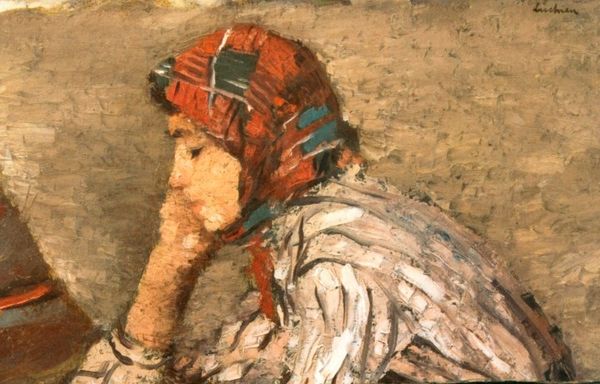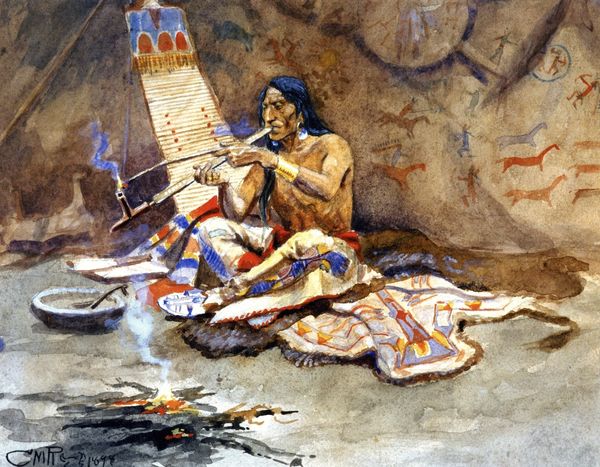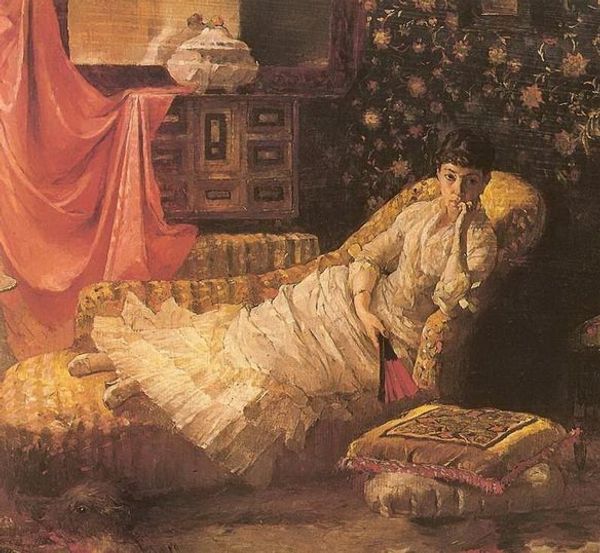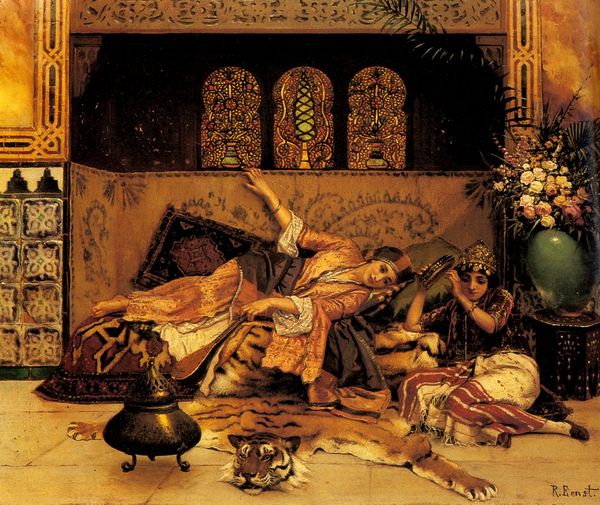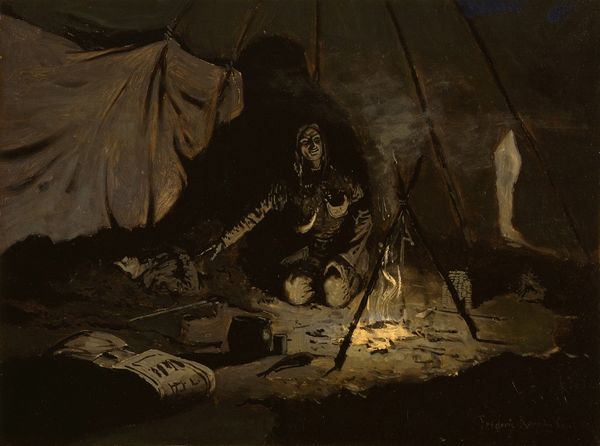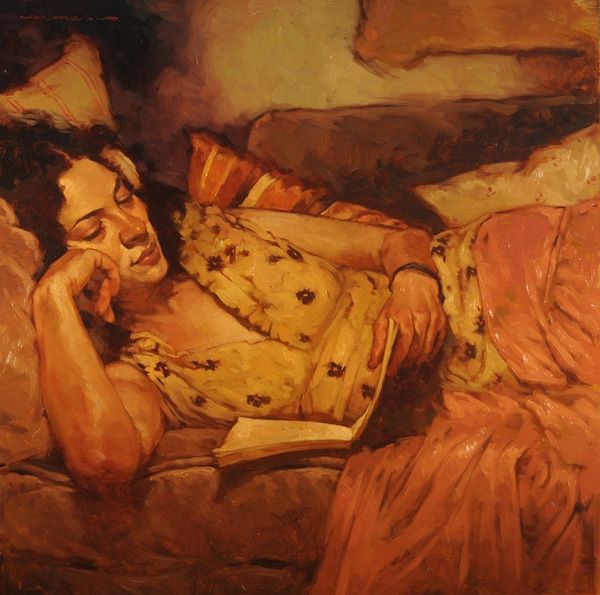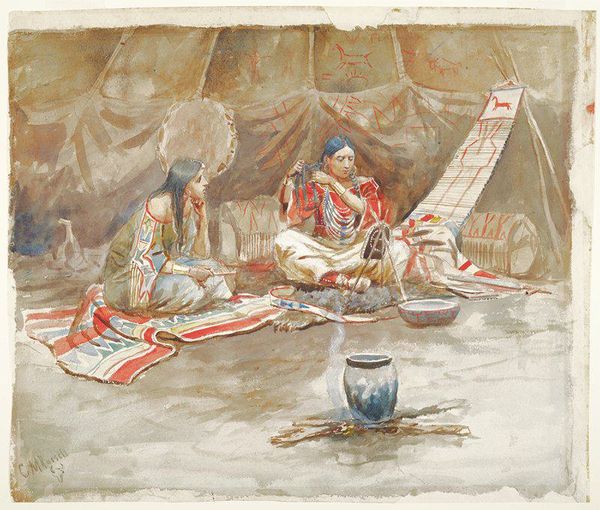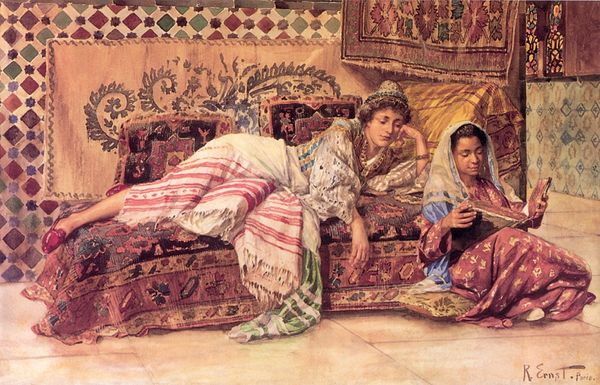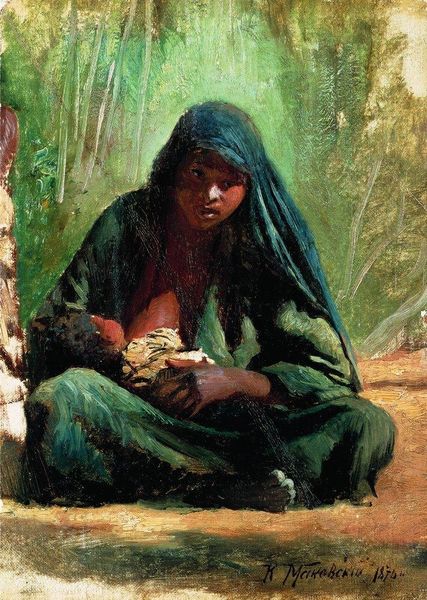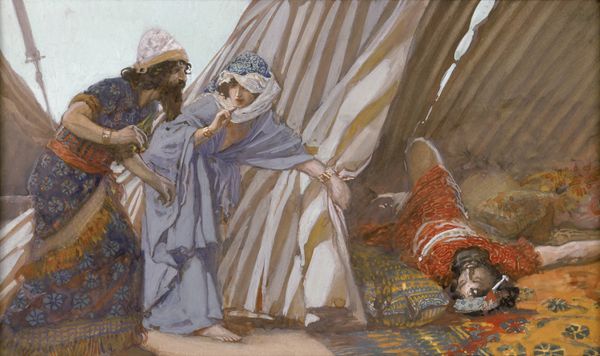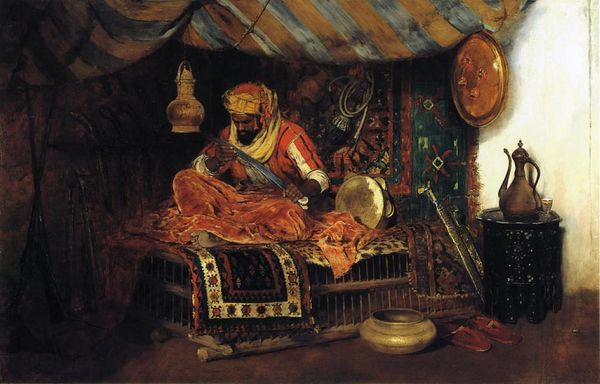
painting, oil-paint
#
portrait
#
painting
#
oil-paint
#
figuration
#
oil painting
#
watercolor
Copyright: Public domain
Curator: This is "Keeoma," an oil on canvas created in 1896 by Charles M. Russell. What's your immediate response to it? Editor: It evokes a feeling of quiet intimacy, yet there's an undeniable sense of staged artifice in the pose. It feels… romanticized. Curator: The romanticism makes sense. Russell often depicted scenes of the American West, drawing heavily on his experiences and observations, but also constructing an idealized image. Considering the materials, look at the way he uses oil paint to capture textures. The rough hide she’s resting on, the beadwork on her dress – it's all rendered with a meticulous hand that both idealizes and documents. Editor: Absolutely. But beyond the textures, what jumps out are the symbols adorning her space. Look at the painted tipi liner. The animals – horses, bison – speak to a cultural memory steeped in hunting and survival. And what of the feather fan? It's an object of ceremony and power, wouldn't you agree? It amplifies this sense of spiritual significance that underlies the whole composition. Curator: Precisely. That feather fan… it hints at trade, access to resources, a certain position within her community. It underscores a crucial aspect – how Russell positions this woman not just as an individual, but within a network of exchange, material wealth, and labor. How the availability of painting materials also enabled him to participate and document this culture in a new context. Editor: And there’s something intriguing about the absence of direct eye contact. It reinforces her as a subject for the white gaze, while subtly enhancing the air of mystery surrounding Indigenous traditions, or perhaps Russell's romanticized perspective of it. It speaks to a cultural appropriation of the woman’s identity, and speaks strongly to a need for more representation and the appropriation by an outsider. Curator: That gaze and the use of Indigenous objects tells a complicated story about this work’s making. Thank you for taking the time to share those insights with me today! Editor: Thank you, it has been insightful discussing this romantic portrait!
Comments
No comments
Be the first to comment and join the conversation on the ultimate creative platform.

